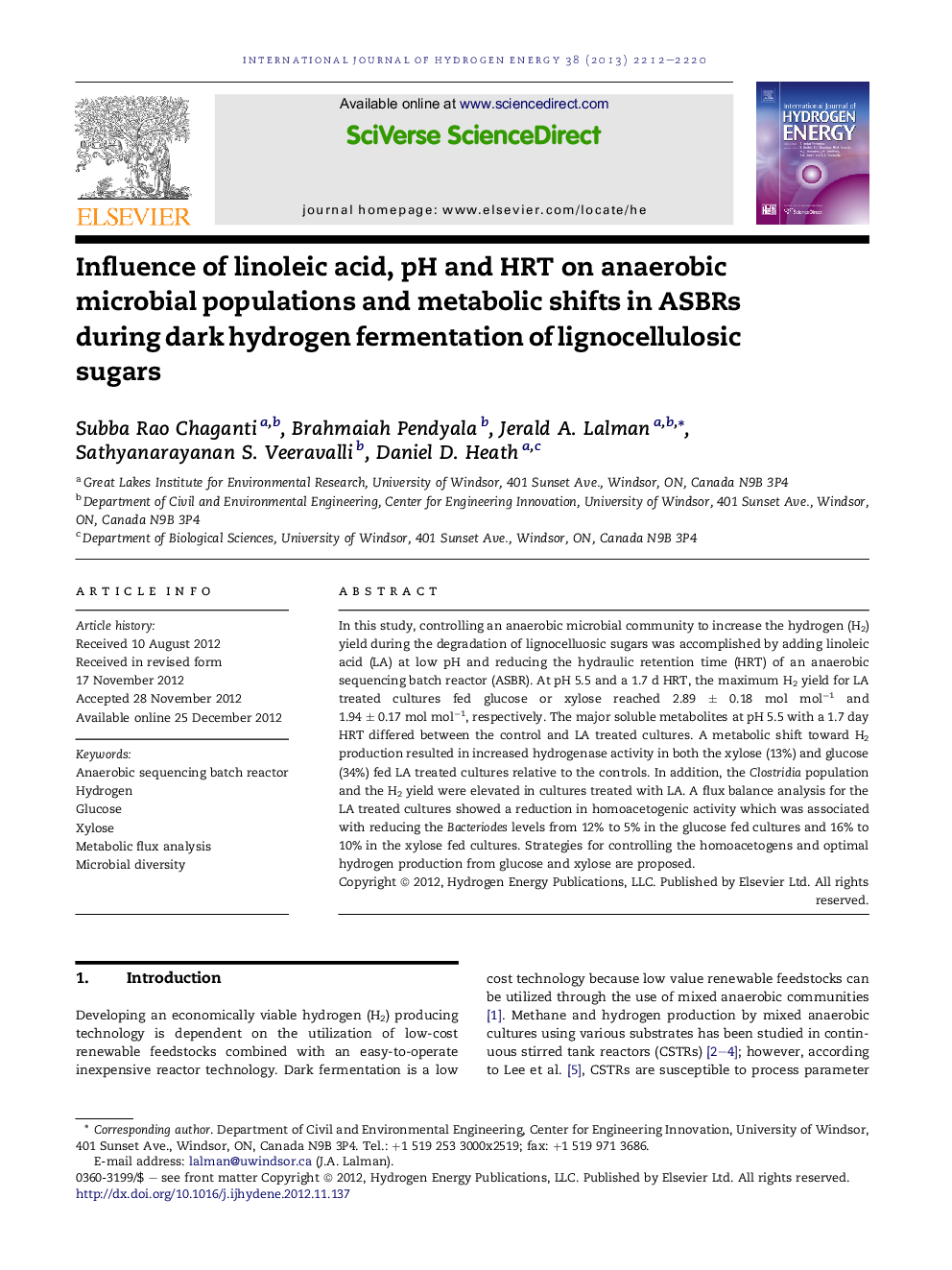| Article ID | Journal | Published Year | Pages | File Type |
|---|---|---|---|---|
| 1274084 | International Journal of Hydrogen Energy | 2013 | 9 Pages |
In this study, controlling an anaerobic microbial community to increase the hydrogen (H2) yield during the degradation of lignocelluosic sugars was accomplished by adding linoleic acid (LA) at low pH and reducing the hydraulic retention time (HRT) of an anaerobic sequencing batch reactor (ASBR). At pH 5.5 and a 1.7 d HRT, the maximum H2 yield for LA treated cultures fed glucose or xylose reached 2.89 ± 0.18 mol mol−1 and 1.94 ± 0.17 mol mol−1, respectively. The major soluble metabolites at pH 5.5 with a 1.7 day HRT differed between the control and LA treated cultures. A metabolic shift toward H2 production resulted in increased hydrogenase activity in both the xylose (13%) and glucose (34%) fed LA treated cultures relative to the controls. In addition, the Clostridia population and the H2 yield were elevated in cultures treated with LA. A flux balance analysis for the LA treated cultures showed a reduction in homoacetogenic activity which was associated with reducing the Bacteriodes levels from 12% to 5% in the glucose fed cultures and 16% to 10% in the xylose fed cultures. Strategies for controlling the homoacetogens and optimal hydrogen production from glucose and xylose are proposed.
Graphical abstractFigure optionsDownload full-size imageDownload as PowerPoint slideHighlights► H2 production in ASBRs from glucose and xylose using linoleic acid (LA) inhibited cultures. ► Maximum H2 yields reached 2.89 ± 0.18 mol mol−1 of glucose and 1.94 ± 0.17 mol mol−1 of xylose. ► Clostridia population and the H2 yield were elevated in cultures treated with LA. ► Metabolic shift toward H2 production in both xylose and glucose fed LA inhibited cultures.
